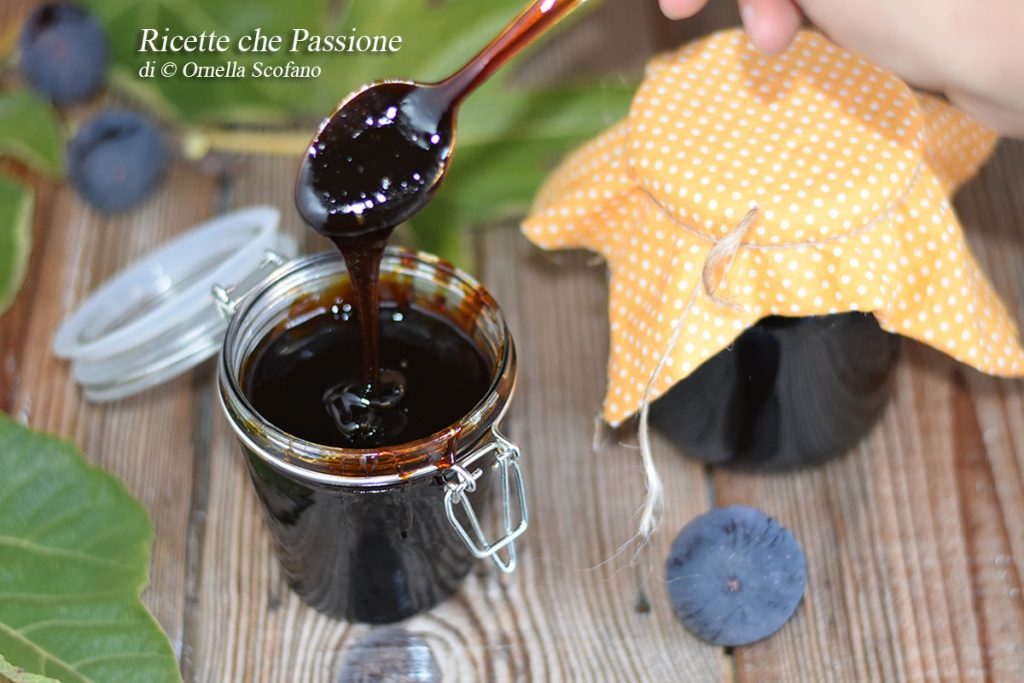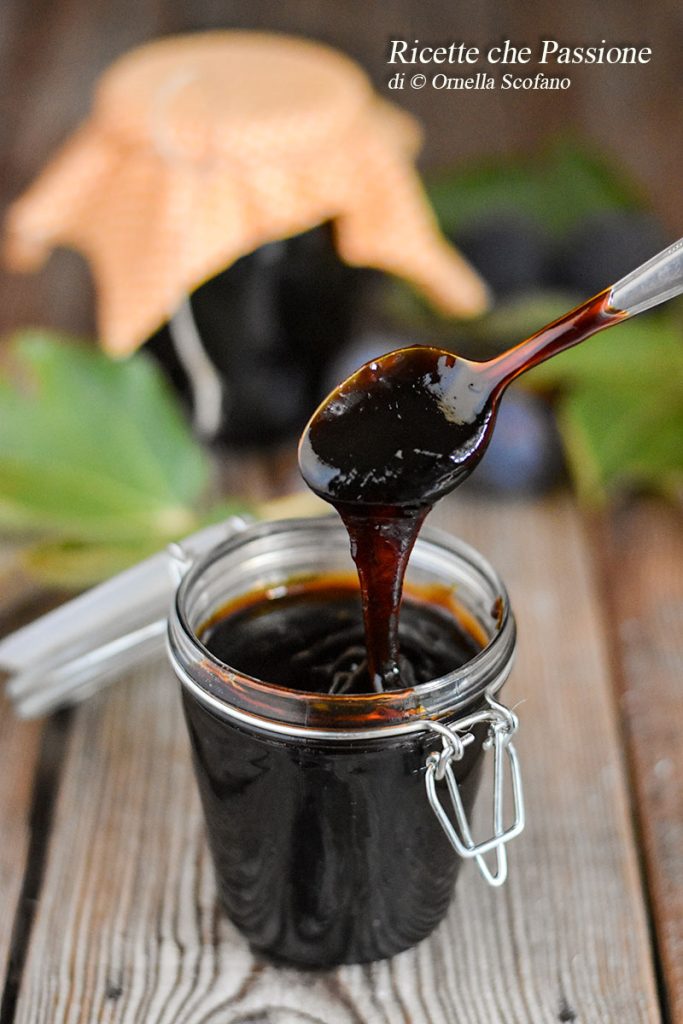Cooked fig honey is a delicious fig glaze, a Calabrian specialty, obtained from cooking figs. The process is a bit long, but not difficult, we can all prepare it at home with the usual means we have available. Keep in mind that I prepared 2 liters with a quantity of 10 kg of figs basically on a common gas stove, but traditionally it is made on a wood fire. This glaze, called in Calabrian dialect milazzu or melicotto, cooked fig honey indeed, is often used to prepare Christmas sweets, but also the legendary scirubetta, the granita with honey, a winter granita, made not with ice, but with freshly fallen snow and lots of honey, almost a mirage, since I haven’t seen snow in my town in Calabria for at least a decade, but as a child, they often made it for me, oh how wonderful it was.

- Difficulty: Difficult
- Cost: Economical
- Preparation time: 8 Hours
- Portions: 1 quart
- Cooking methods: Boiling
- Cuisine: Italian
- Seasonality: Summer
Ingredients
- 11 lbs Figs
- 1.3 gallons Water
- 8.8 oz Sugar
Tools for preparing cooked fig honey
- Pot
- Jars
Preparation of cooked fig honey
If the figs might be dirty, we wash them, and immediately after, we crush them directly in a large pot where we will also put the water for the first cooking. Crush the figs very well by hand to obtain a puree; this will speed up the first cooking from which we must extract a sweet liquid that will be reduced to eventually become cooked fig honey.
The operation is simple but can be tiring depending on the quantity we prepare. I start with a minimum recipe of 11 lbs of figs to obtain at least a quart of honey; for less, it’s not even worth it. Still, I recommend preparing even more; I gathered 110 lbs of figs this round from mom’s two trees in the garden, but I only prepared 22 lbs to try on the normal gas stove, and although a bit challenging, I managed to fit a large enough pot to hold the 22 lbs of figs and water, because the proportions must always be maintained.
So we bring the fig puree with water to a boil, 11 and 11, or 22 and 22, and so on. Let it cook for at least 40 minutes from boiling. In some cases, it is cooked even longer, usually when whole figs are left, figs that will need more time to release all their sweetness. The figs in this case will be reused by drying them in the sun, becoming dry and black, thus obtaining black figs, another typical Calabrian delicacy. If we crush the figs, they are no longer suitable for preparing dried black figs, just remember this if you decide to prepare them.
Back to the honey, once the figs have been cooked for 40 minutes, we need to filter the liquid in which they are cooked, while the fig pulp is no longer needed, but we must separate the two well. With a large colander, we can proceed to make the first coarse separation, then filter the liquid with a clean cloth to prevent fig seeds from passing through. If you want to save time, do as I do, take a clean linen sack or resistant material, and put all the mixture inside; only the liquid will start to drip, and all the unusable pulp remains inside. To keep the sack suspended, you can tie it to a pole, and position the pole on two chairs so it remains higher than the container. Once part of the liquid is collected, we put it to cook on the fire, and gradually as more liquid is produced that drips from the sack, we add it to the rest on the fire. Let it cook on high flame, without a lid for several hours, until the liquid reduces and becomes dark in color; it looks black in the pot, but on closer inspection, it is more amber. If we want to stretch it a bit, we can add sugar towards the end, when the cooked fig honey is already quite reduced. I only added for 22 lbs 17.6 oz, so 8.8 oz for every 11 lbs of figs, but it’s not entirely necessary. If we want a more natural product, we can also avoid adding sugar and slightly extend the cooking time to finally get the right consistency, a honey that when tested on a plate, sticks without sliding off quickly, it should flow very slowly.
To preserve it, we can put it in well-washed bottles or jars, better if sterilized. I always do it in the microwave, just wash them and put them still wet in the microwave at maximum power for about a minute and a half. I fill the jars with the honey while still hot, screw them on tightly so that when they cool, a vacuum will form. If the vacuum doesn’t form, don’t worry, the honey will keep well anyway, also because it’s usually not vacuum-sealed, and once a jar is opened, it keeps for a long time, if it lasts, but I doubt it will last long, just until Christmas, or at most I will save some for summer cravings, I don’t know why but in August there’s always a craving for turdilli, Christmas sweets glazed with cooked fig honey, other typical sweets made with honey are mostaccioli, or susumelle.


